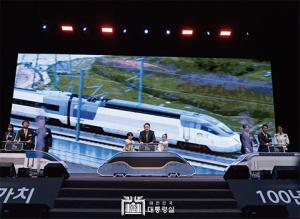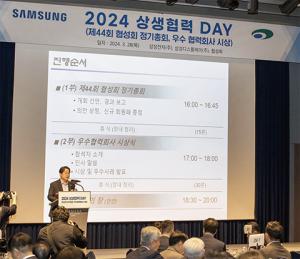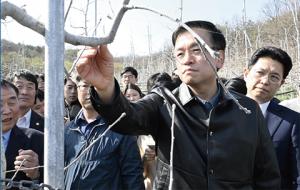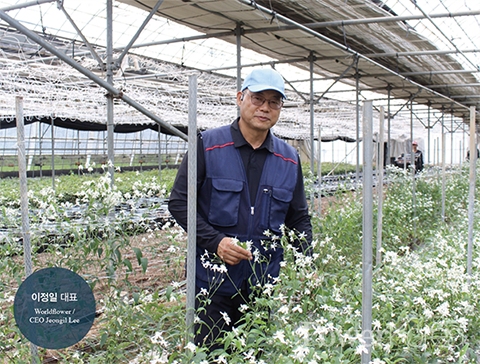 |
||
Warm South America or Southeast Asia can produce flowers year-round without a greenhouse. Labor costs are also low. Thanks to free trade agreements, many flowers produced here are imported into Korea at low prices. Domestic flower farmers are struggling with soaring material, fuel, and labor costs. Worldflower is an agricultural company looking for a breakthrough in the flower industry by targeting a niche market through small-scale production of multiple varieties and right land, right crop cultivation. Monthly PowerKorea met CEO Jeongil Lee and learned the story.
 |
Competitive edge by growing new varieties
After working for a seeding company in Seoul since 1994 in various roles, including distributing and exporting flowers, Lee moved to Jincheon, Chungcheongbuk-do in 2007 to start producing flowers in earnest.
He produces more than 20 types of flowers, including tulips, peonies, hyacinths, and clematis, in a total space of 99,173 square meters (about 30,000 square feet), including house and open field.
He says “I worked for a horticultural company for over a decade, exporting lilies and introducing new varieties of roses across the country. I realized that roses, chrysanthemums, and lilies couldn’t compete with imports, so I found a niche and started growing high-value cut flowers: tulips, clematis, and peonies.”
He worked on a technology to produce tulips year-round and now produces 2 million tulips a year. He has a plant factory system that produces about 160,000 tulips a month at a steady rate all year round.
He explained that a farmer shouldn’t think of growing just one type of plant, but rather grow multiple varieties for each season, adjust the timing of production and shipping, and produce flowers year-round to be more competitive.
“I go to advanced flower countries like Japan and the Netherlands and bring back any new varieties, study cultivation techniques and manualize them. I try to develop new varieties and bring in new flowers. I strive to be able to ship products at the right time to meet the needs of our customers.”
 |
Global competitiveness with ‘multi-variety, low-volume production’ and ‘right land, right crop’ cultivation
The company has strengthened its competitiveness by producing various floral products such as peonies using ‘right land, right crop’ cultivation method.
‘Right land, right crop’ cultivation is a method of planting and cultivating crops on land that is suitable for their growth, instead of using cultivation methods that require excessive production costs such as heating. This requires a good match between the crop and the socio-economic environment, including climate suitability, labor costs, consumer preferences, and market access.
“People used to grow flowers in the winter with a lot of heating. This is no longer the case. The global trend is to move to warmer climates. Even the Netherlands is moving its flower production to Colombia, Kenya, Vietnam, and elsewhere in search of more moderate temperatures.”
He formed the Jincheon Peony Export Crop Group and exported about $30,000 to Thailand. In Southeast Asia, where there is no winter, peony is a precious flower. The color and quality are excellent, so next year, he plans to promote and export peonies to the United States and Taiwan, earning about $100,000.
“Once planted, peppers can be harvested for many years and are highly profitable. Even if you grow it in the open field, it’s not difficult to grow because it’s pest-resistant and easy to manage. In a time when we are competing with flower farmers from all over the world, the way we win is by right land, right crop cultivation.”
Lee was awarded the Grand Prize at the 17th Hansarang Rural Culture Award for his contributions to floriculture technology, was designated a New Intellectual in 2017, and received the Regional Innovator Award in 2019.
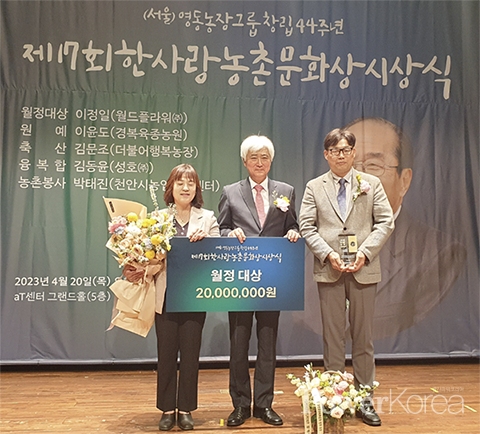 |
To become the first flower company to reach 10 billion won in annual sales
“We currently produce 2 million tulips a year, and I think we can achieve our goal of 10 billion won in annual sales if we have the infrastructure to produce 10 million. This year, we’re currently generating about 2 billion won in sales, and I think we can expect to reach 3 billion won. “It may seem reckless to others, but I’m always trying and testing new items. Instead of looking for reasons why it won’t work, you should look for at least one reason why it will and try it.”
백정준 기자 googies@naver.com

